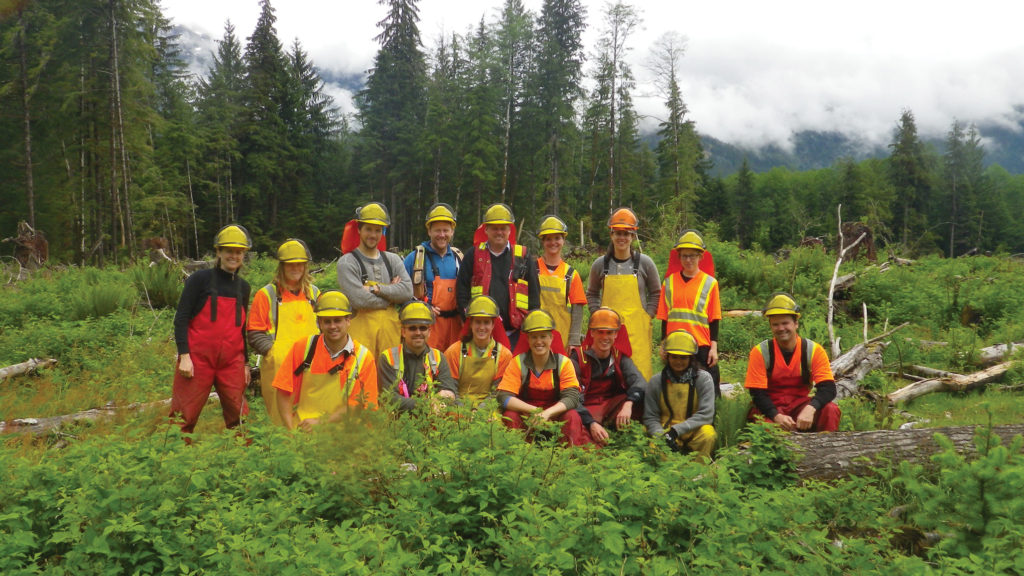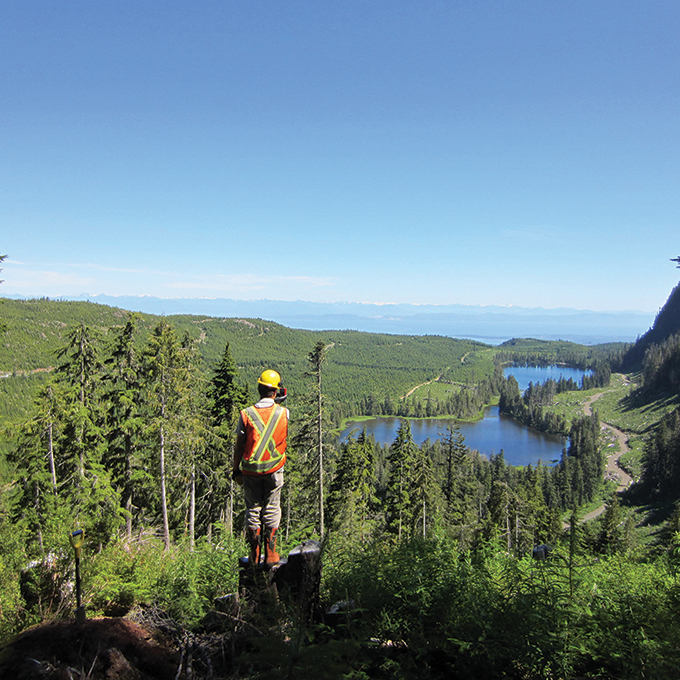After a tough period, the forest industry in B.C. is heading into a period of re-growth.
With a lower Canadian dollar and a slow recovery in the U.S. and around the world, the Business Council of B.C. says things are looking up, particularly for the forest industry.
“The U.S. economy is gaining ground, the Eurozone is out of recession, and Asia, particularly China, continues to expand at a robust clip,” said executive vice president Jock Finlayson as he released the BCBC economic outlook in January. “The weakening of the Canadian dollar relative to the U.S. dollar will also help lift B.C.’s export of goods and services to the U.S., prompt more U.S. travellers to come to B.C., and serve as a headwind to cross-border shopping.”
The report forecasts improvement in U.S. demand for lumber and other building materials, wood pulp and even natural gas, which has fallen to historic lows with a surge of shale gas production around North America.
Recovery of the struggling B.C. coastal forest industry was echoed at the Truck Loggers’ Association convention in January. And it’s enticing B.C. workers to come back home. “I’ve got a desk covered with resumes of people who work in the oil patch,” said Don Banasky, operations manager at CopCan Contracting Ltd. and FallTech Logging in Nanaimo and vice-president of the TLA.
Banasky said there are openings for road building, driller-blaster, grader and excavator operators in his operations, and some employees at remote oil and gas developments are anxious to work closer to home. And that includes the Campbell River area.
That means employment in the forest industry has become appealing once again. One of the best ways to get into the industry is to take post-secondary training.
Forest programs are offered at university and college level institutions across Canada where they learn forest ecology and health; engineering to design forest roads, bridges and cut blocks; resource management; mathematics; and computer programming, amongst other things. Many forestry schools have cooperative programs connecting students with summer and short-term on-the-job training.
After a minimum of two years working in the industry, forestry workers are eligible to write exams to become Registered Forest Technicians or Registered Professional Foresters (RPF) as members of the Association of British Columbia Forest Professionals.
“The most rewarding part of being a forester is seeing your labours become a reality. We see new forests grow after harvest or devastating fire, challenging roads built, share offices with wildlife, and we are able to enjoy the outdoors every day,” Thomas Hartz, an RPF working with the Ministry of Forest, said. Forestry education is even reaching into the high schools with Campbell River’s Carihi spearheading an innovative forestry program.
The latest studies by PriceWaterhouseCoopers (PwC) and Coast Forest Products Association have unveiled an exciting snapshot of where coast forestry is today. It reveals a people-focused industry that has undergone a transformation and emerged dynamic, modern, sustainable and high-tech. It’s a good livelihood to get into. Coast Forest Products Association (CFPA) companies pay more than $373 million per year in salaries with surveyed companies paying an average of $40/hour in wages and benefits to their employees, according to Rick Jeffrey, president and CEO of the CFPA. “An estimated 38,000 people in communities throughout B.C. rely on a healthy coastal forest industry for their jobs (direct, indirect, induced) – and this includes an estimated 5,735 direct jobs from contract logging,” he said. “Further, coastal forestry in B.C. supports an important and valuable manufacturing sector in our province. More than 3,100 people work in over 100 companies producing value-added solid wood products like flooring, architectural woodwork and cabinets while 2,700 people work directly for pulp and paper companies that manufacture newsprint, specialty paper and other products.”
Photos: Campbell River National Forest Week Committee

